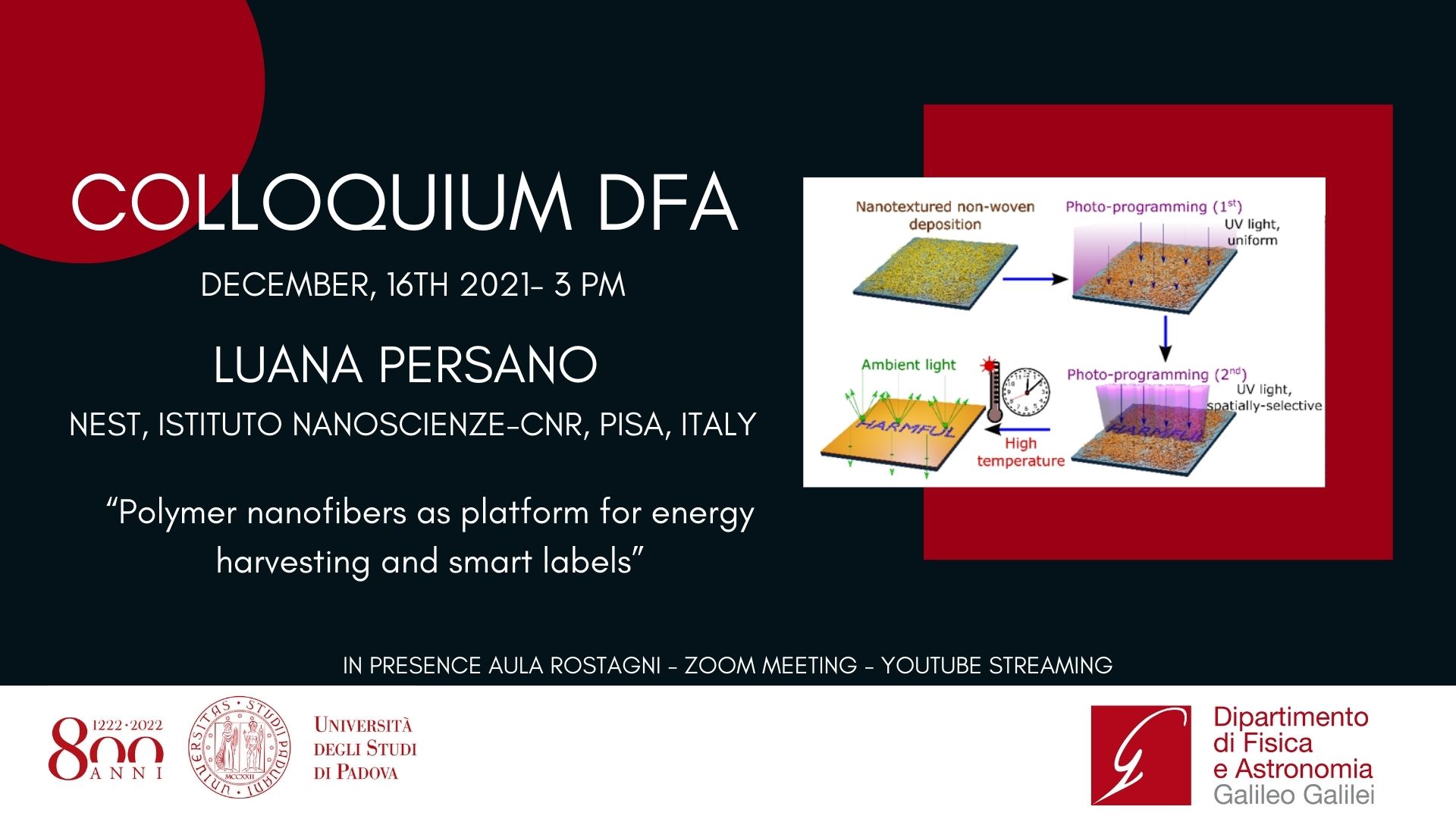COLLOQUIUM DFA - LUANA PERSANO - Polymer nanofibers as platform for energy harvesting and smart labels
by
1/1-1 - Aula "A. Rostagni"
Dipartimento di Fisica e Astronomia - Edificio Marzolo

Polymer nanofibers as platform for energy harvesting and smart labels
Luana Persano
NEST, Istituto Nanoscienze-CNR, Pisa, Italy
1D organic materials are gaining continuous research interest, and polymer nanofibers, to be used as building blocks of complex architectures, can lead to advances in many fields of application. In particular, electrospun nanofibers exhibit highly interesting physico-chemical properties, can be designed with multifunctional capabilities and can be used as sensors or to store and convert energy. The interest on this class of materials in industrial applications, mainly relies on their high surface to volume ratio, large area coverage, and availability of low-cost production technologies. Here I report on our research on electrospun fibers, merging photonic functions and energy harvesting capability (1). An additional exploited application relies on their use as photoprogrammable material for intelligent labels. It is well known indeed that spoiled perishable products, such as food and drugs, when exposed to inappropriate temperature, cause million illnesses every year. I will introduce to optically-programmed, non-colorimetric indicators based on polymer fibers. The devices operate by visual contrast with ambient light and can be designed to achieve the desidered time-temperature response.
The research leading to these results has received funding from the European Research Council under the European Union’s Horizon 2020 Research and Innovation Programme (Grant Agreement no. 682157, “xPRINT”) and from the Italian Minister of University and Research PRIN 2017PHRM8X and 20173L7W8K projects.
References
1 L. Persano et al., Advanced Materials 2017, 29, 1701031, 10.1002/adma.201701031.
2 L. Romano et al. Nature Communications 2020, 11, 5991, https://doi.org/10.1038/s41467-020-19676-y.
Zoom Link: https://unipd.link/ColloquiumDFA_16-12-2021
YouTube Link: https://unipd.link/AulaRostagniUniPadovaDFA
